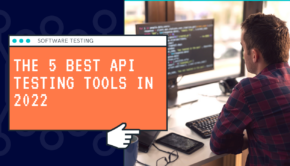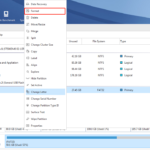What is an API?
API or Application Programming Interface is generally understood by anyone using technology; they provide the invisible backend that powers the visible interface on their laptop screen.
APIs enable applications to work together by giving access to software that would otherwise remain unavailable, saving businesses both time and resources by linking internal systems with third-party platforms or tools that they would not normally have access to.
What is an API?
APIs allow businesses to connect their applications with those of others in the software ecosystem, increasing efficiency and driving innovation. No wonder the use of an API has become so widely adopted over time – being utilized by digital natives, social media platforms, banks, conferences, manufacturers, healthcare organizations, and eSports leagues alike.
An Application Programming Interface is a set of tools designed to facilitate rapid computer program development with few steps and lines of code, much like building with Legos.
Once developers acquire an API, they can connect it with other programs, systems, or devices to deliver new functionality.
One of the primary uses for an API is communicating with third-party software programs. For instance, websites may use one that connects them with systems like PayPal to process payments using third-party payment processing systems like Stripe. You can click the link: https://www.nerdwallet.com/article/small-business/third-party-processors for more information.
When receiving requests from visitors for payments through such systems, their respective websites would process their requests before returning results back to browsers or applications used by users.
When developing an API, it is essential to follow a standard software development lifecycle (SDLC). Tools will help reduce friction while guaranteeing each change is properly tested and documented before being deployed into production.
What is an API Specification?
APIs enable several types of software to communicate, making life easier for developers by offering shortcuts for performing common actions.
An API specification is a blueprint that describes how the application programming interface works and the responses it can expect to produce. They are usually developed prior to building the API – sort of like giving directions to its creators!
A primary distinction between an API specification and documentation lies in their intended audiences: the specification is written for human consumption and should provide a broad understanding of functionality and results, while documentation is more specific and direct in its approach to communicating these details.
Without clear and accurate documentation, your API may become difficult for others to use.
What is an API Endpoint?
APIs enable different software systems to share data between themselves, facilitating integrations. But their interaction can be complex and bewildering if you are just getting started in development and implementation.
An API endpoint is a specialized digital address that grants access to an Application Programming Interface server. While URLs (Uniform Resource Locators) identify website pages, endpoints provide direct access to resources on servers through API calls. You can visit this site to learn more about URLs.
Each Application Programming Interface offers multiple endpoints that correspond with its resources. For example, social media APIs might feature one endpoint for users and another for posts and comments. An Application Programming Interface client will send their request using one of four HTTP methods (GET, POST, PUT, or DELETE), with additional parameters and authentication credentials as part of its request.
Security endpoints are essential in order to keep hackers at bay and protect users’ data from being exploited for malicious uses by third-party threats, so the best way to do this is to ensure all relevant endpoints are well-documented and regularly maintained.
Creating documentation includes information on all methods, accepted data types, and security measures of an Application Programming Interface. Keeping up to date is crucial as new security measures come online over time; testing these endpoints is also beneficial as this allows any errors or bugs to be discovered before being exposed publicly.
What is an API Method?
A method is the actionable capability of an Application Programming Interface endpoint and typically comprises a URI identifying its resource, an HTTP verb (such as GET or POST), as well as additional data or parameters necessary to guide that action.
These typically offer other benefits as well, including headers with information like response format (JSON or XML), authentication tokens, and more.
Application Programming Interfaces enable various software components to communicate and share data and functionality more easily, making integration systems simpler to set up as well as automating tasks that would otherwise be too laborious or impossible to complete manually.
These interfaces can be found everywhere from consumer websites to enterprise software applications, from public-facing portals like YouTube to internal systems developed within companies.
While some of these interfaces are open to all, others are restricted only for internal use by particular departments or employees within an organization. Many companies develop their own in-house to facilitate operations and collaboration across departments while others rely on third-party integration such as data integration or marketing automation through relevant gateways that provide additional layers of protection for sensitive information.












